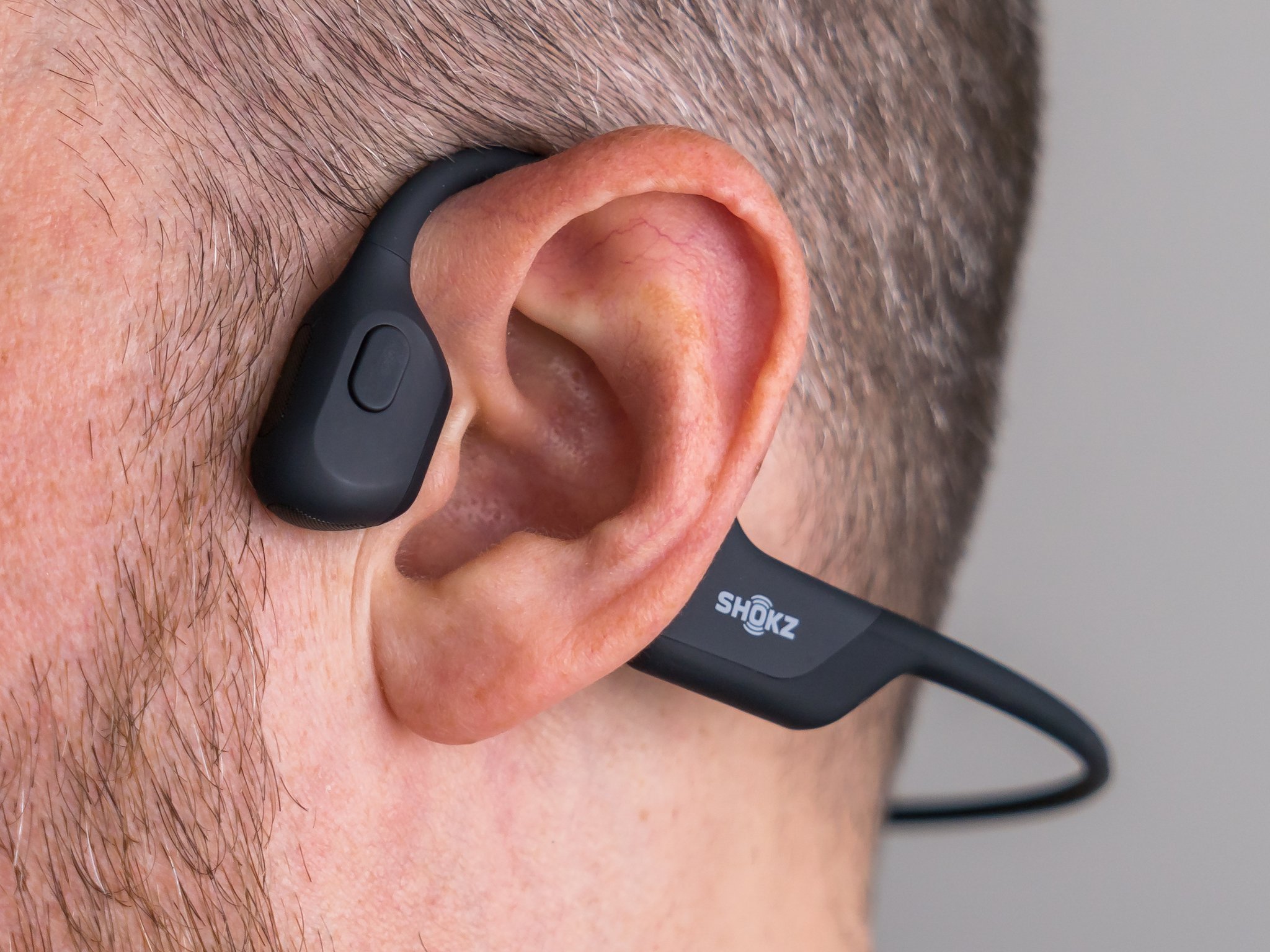Android Central Verdict
The OpenRun Pro continue to show why Shokz is the premier brand for bone conduction headphones by doing the key things right. You do sacrifice a thing or two to get the experience, but if you're down to free your ears, you won't go wrong with these.
Pros
- +
Good sound quality
- +
Comfortable fit
- +
Multipoint connections
- +
Decent app support
- +
Solid battery life
Cons
- -
Bass could be better
- -
Can't really adjust fit
- -
App needs a deeper EQ
Why you can trust Android Central
It's not unfair to suggest bone conduction headphones are an acquired taste. By and large, most want to cover their ears to hear the tunes they want, but for those times where you may want to free them, bone conduction headphones are one way to do it.
Shokz (formerly AfterShokz) usually steps up as one of the best options, and that's what the OpenRun Pro clearly turn out to be. They're presented as more active in focus, but that's not really necessary to enjoy them for what they can do.
Shokz OpenRun Pro review: Price and availability
In December 2021, AfterShokz became Shokz, and in turn, the company changed the names for its key product lines. OpenRun replaces the Aeropex line, so this is largely a continuation, rather than a brand new line. Shokz released the OpenRun Pro at the same time as it changed its branding, selling it for $180. Shokz keeps its products in retail for fairly long periods, so they won't be hard to find. They only come in cosmic black.
Shokz OpenRun Pro review: What's good
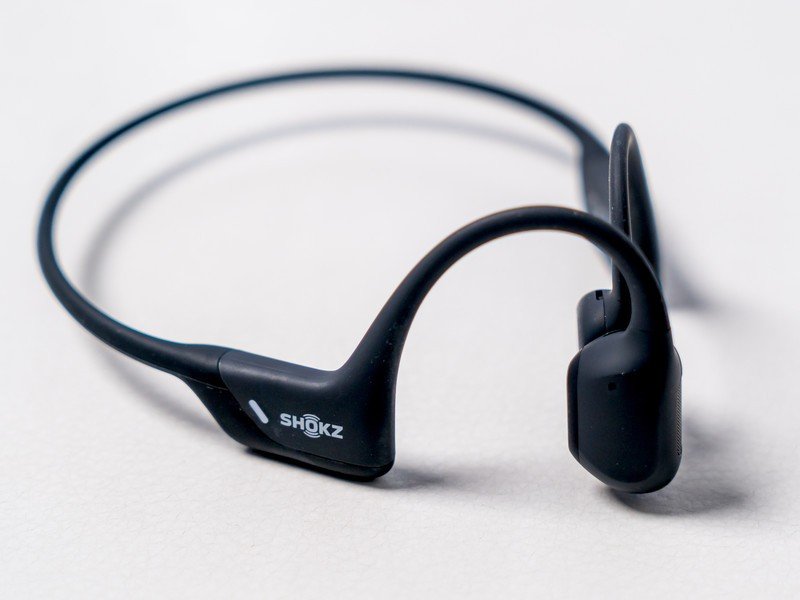
I readily admit I was never fully sold on bone conduction headphones because they asked a lot of me. I had to accept that sound wouldn't be as bold or resonant, and would have to wear them around the back of my head. The OpenRun Pro are probably the first to start changing my perception for the simple fact they move the needle in the right direction.
As I noted already, Shokz made the OpenRun Pro for a more active crowd, but you don't have to be an athlete to enjoy them for what they are. The "Pro" in the name is more indicative for the audio performance than their durability. The regular OpenRun hold an IP67 rating, whereas the OpenRun Pro are IP55. There are a few other differences, like charge time, battery life, and sizing, but otherwise, the biggest change is in how they sound.
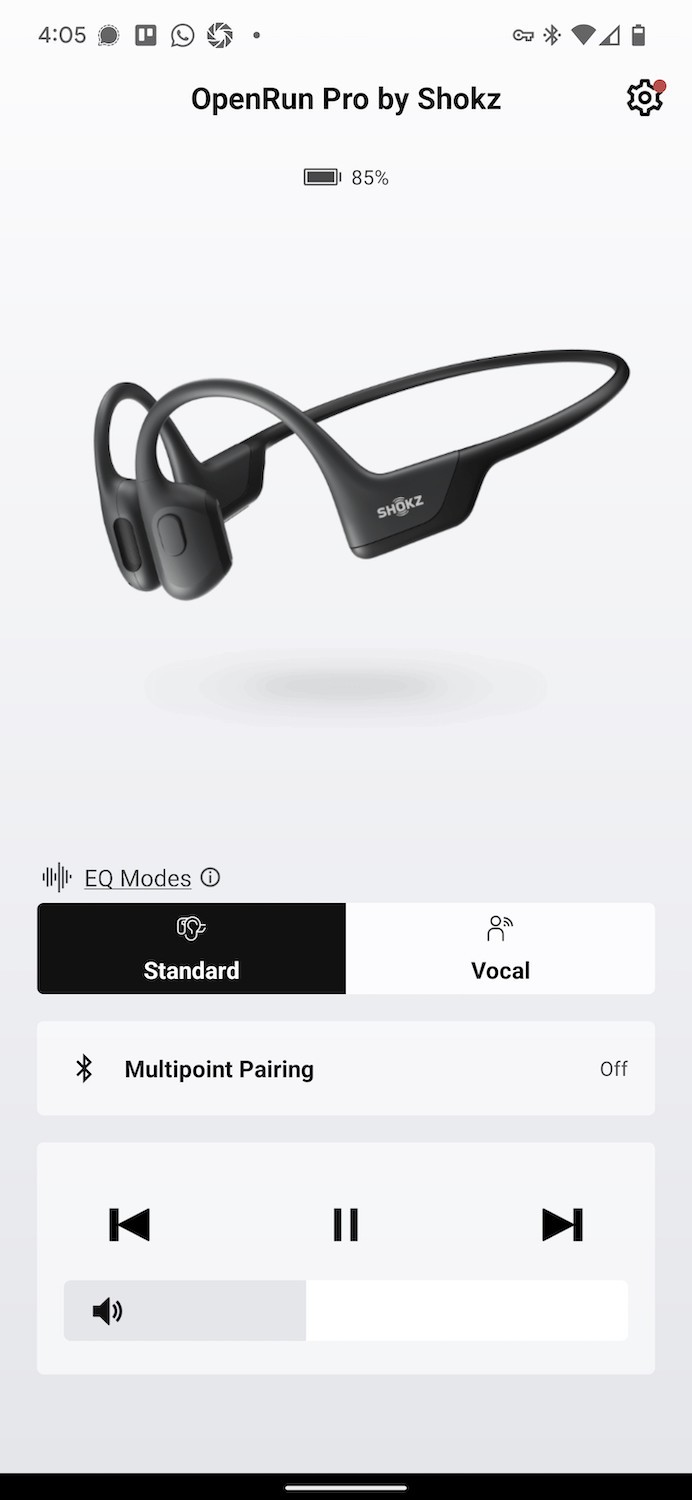
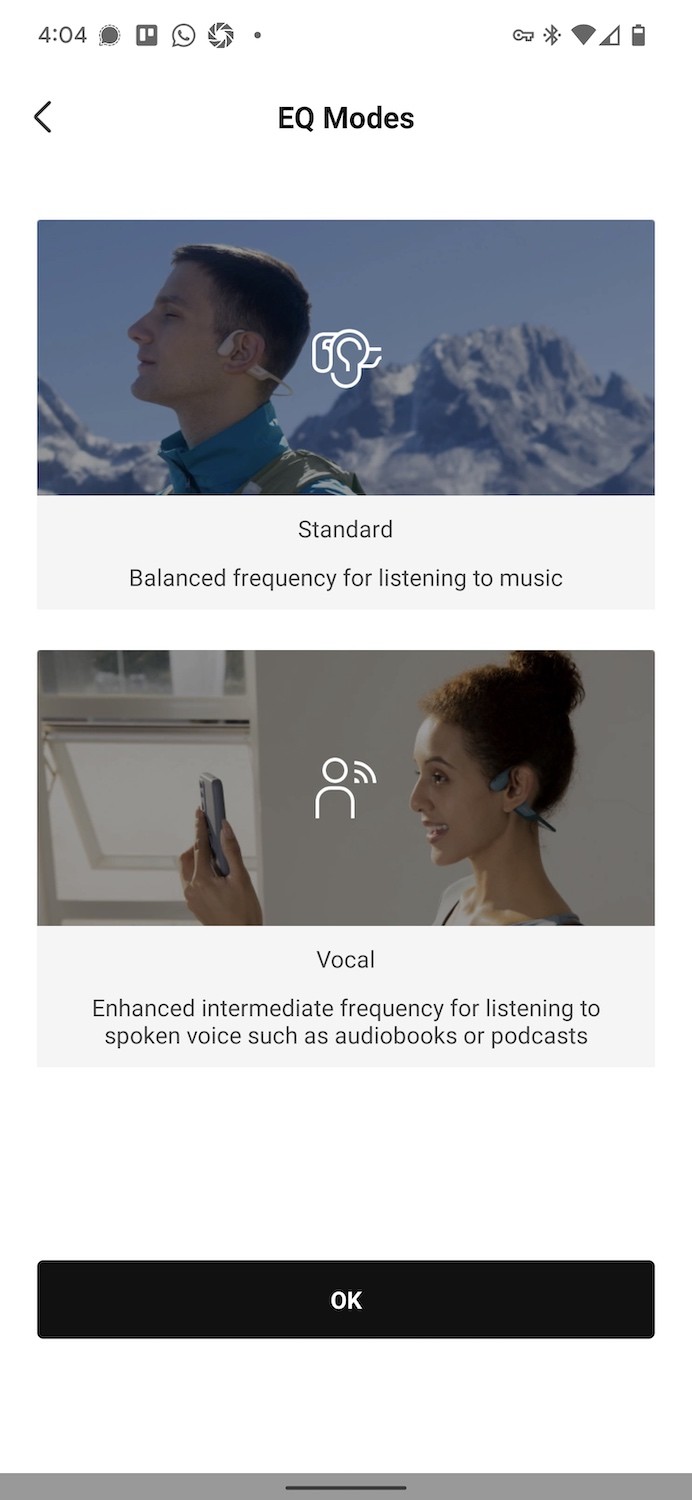
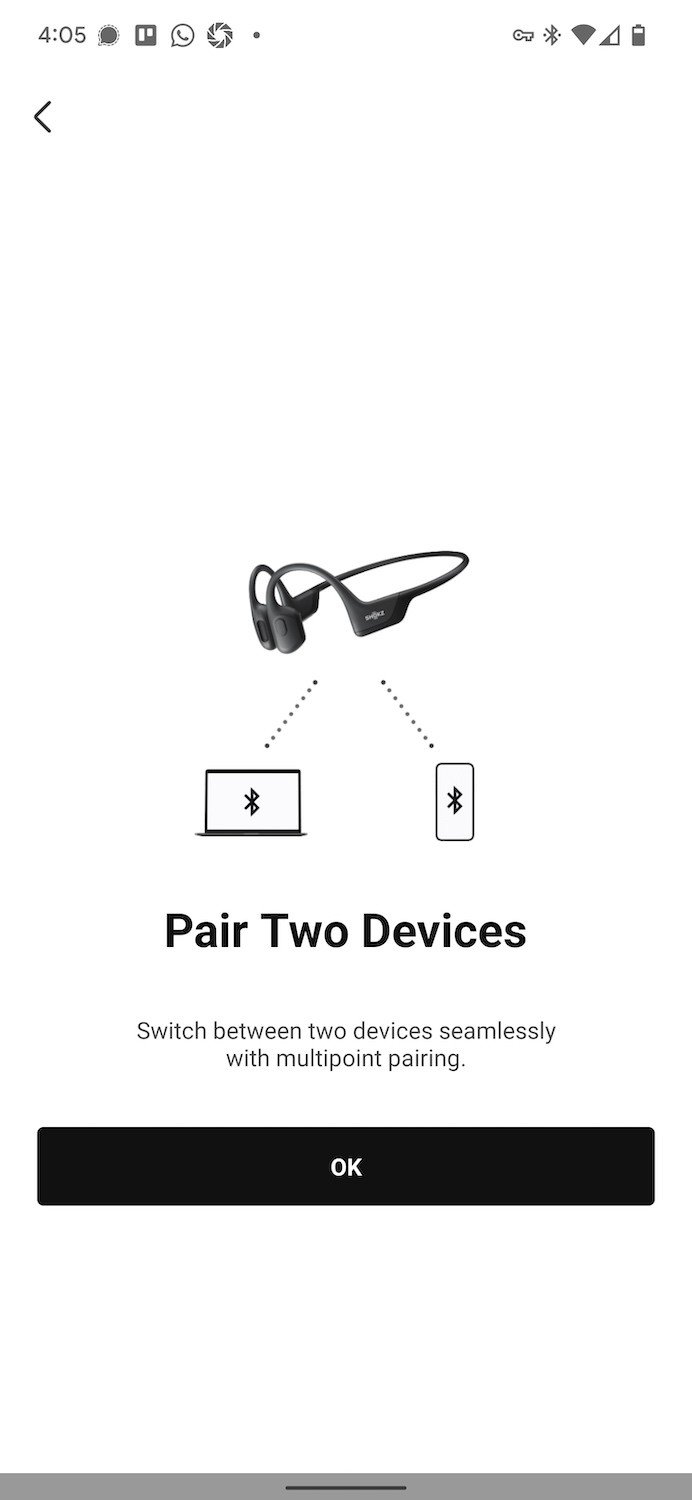
Source: Ted Kritsonis / Android Central
The OpenRun Pro also come with an app, which is great, though you're limited in what it lets you do. The onboard EQ is limited to Standard for music and Vocal for podcasts and spoken word content. You get more bass in Standard, whereas treble gets a boost in Vocal. Phone calls also tend to veer to the latter. Otherwise, your only other option is to set up multipoint where you can connect with two devices simultaneously — definitely a useful thing to have.
To be clear, you won't get booming bass when listening to music with these headphones. Is it better than it used to be? Definitely, but that rumbling effect you may come to expect from hip hop tracks won't feel the same here. You do get improved clarity, though, and there is less of an impact on your ears if you need to raise the volume because the eardrums get hit indirectly. After a while, I would just start listening to a playlist and forget about some of those audible nuances.
The beauty of all this is how well they stay in place.
The beauty of all this is how well they stay in place. Despite the band wrapping around the back of my head, the OpenRun Pro have a slim profile. They're also lightweight, never really pressing against my temples or behind my ears in any noticeable way. I didn't run much with them other than to test the odd sprint to see what would happen, and was pleased to see them stay relatively still throughout.
The OpenRun Pro use the same onboard buttons the regular OpenRun do, except they're bigger this time. The primary multifunction button powers them on or off, and raises volume. Double-click it to skip a track, and hold it down to raise whichever voice assistant you're using. You won't get any special extras, like a mute button for calls, or some unique way to hear notifications, so Shokz really did stick to the basics here.
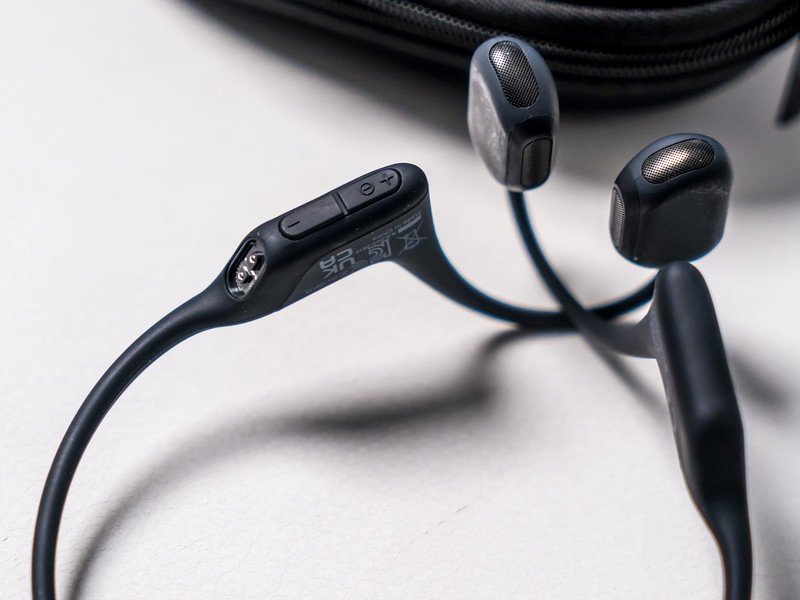
Shokz also upped the battery life from a rated eight hours with the OpenRun to 10 hours with the OpenRun Pro. The number depends on how loud you go with volume. As an added benefit, they don't lose juice on standby as much as their predecessors, either, so you could end up only charging them back up after a week if you're not using them every day.
The protective clamshell case Shokz includes for the OpenRun Pro is another good move, helping to keep the headphones clear of any damage, especially to the drivers at the front. It also has a slip inside to hold the proprietary charging cable the headphones use, ensuring you don't misplace or lose it.
Shokz OpenRun Pro review: What's not good
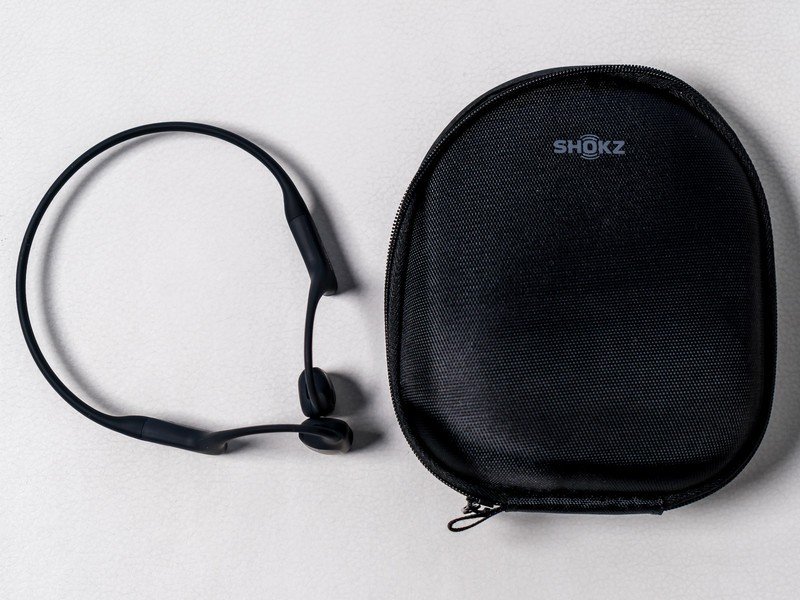
The audio trade-offs are arguably more subjective with bone conduction headphones than your standard over-ears or earbuds. Reason being that you have no way to really shift or change how the audio comes in. Little in the way of adjusting the fit, and no ear tips or other accessories to affect how much you seal the music in. I imagine you will feel this more in busier and crowded settings where your ears are equally exposed to the noises all around you.
Shokz says it put two enhancers to ramp up the bass, but I didn't see a commersurate difference. It's better, yes, but not to the degree that such a change in components are supposed to deliver. Expanding the app's EQ might help to offset that in some way, but that depends on whether Shokz updates the firmware to make that possible.
Shokz says it put two enhancers to ramp up the bass, but I didn't see a commersurate difference.
I also can't understand why they don't have an automatic shut-off after a period of inactivity. You can keep the OpenRun Pro on for hours doing nothing before realizing they're still on and taking juice out of the battery. A quick five-minute charge does help give you at least an hour of playback, except better battery management would go a long way to avoiding those dreaded "battery dead" moments.
You definitely want to keep the charging cable handy, too. The proprietary plug means you will have to bring it with you, as opposed to using a single USB-C cable to charge various other devices. It's why I mentioned the case is so important as a way to keep both the headphones and cable safe.
Shokz OpenRun Pro review: Competition
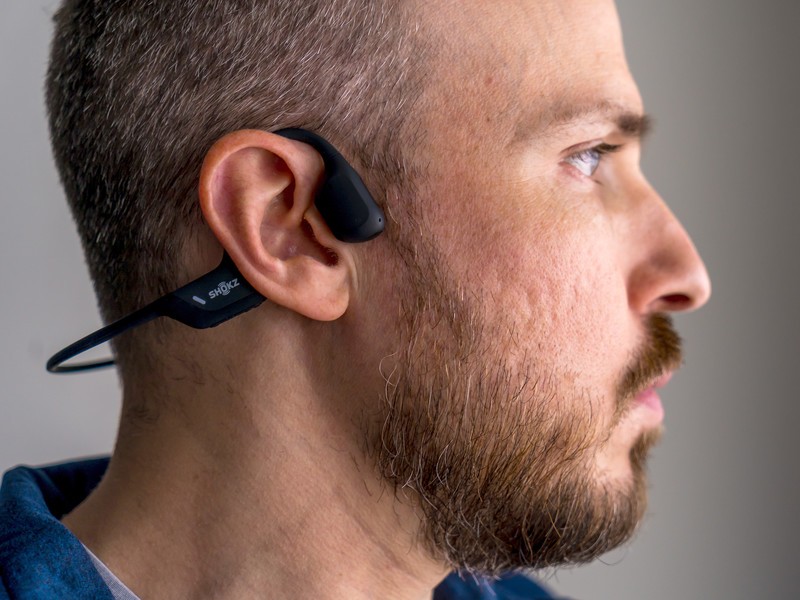
If the very idea of bone conduction headphones don't convince you, you could always look at the best wireless earbuds as alternatives. If you are, you can peruse the best bone conduction headphones to find something that might work. Shokz has a solid hold in this unique category because it also brings variety to the table.
For instance, if you wanted something you can swim with, the OpenSwim (formerly Xtrainerz) were built to do exactly that. Of course, the OpenRun are still around as an alternative to the OpenRun Pro, and when you want something more budget-friendly, the OpenMove are Shokz's entry-level pair.
Shokz OpenRun Pro review: Should you buy it?
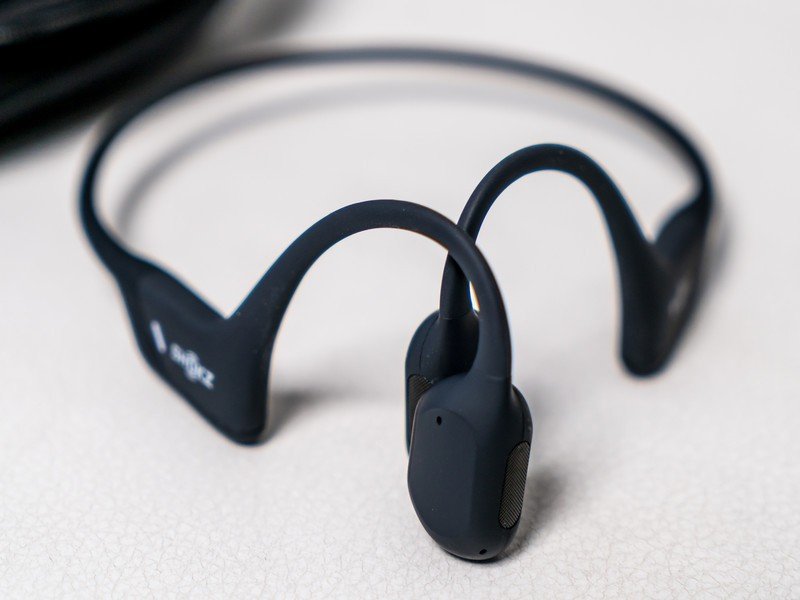
You should buy this if ...
- You like bone conduction headphones
- You want or need to keep your ears free
- You want something that easily fits
- You want better sound quality
You shouldn't buy this if ...
- You want to feel the bass
- You prefer to cover your ears
- You want more durability
- You don't want any wires or bands
Bone conduction headphones can't compete on the same level with over-ear headphones or earbuds by virtue of how they're made. That doesn't mean they still can't perform well, and the OpenRun Pro make that an illustrative point. They fit well, sound better, last longer, and do so without hurting anyone's ears. When you want to hear your surroundings in an unfettered way, few other methods do it this well.
4 out of 5
You just have to be mindful of what that entails. The OpenRun Pro may not be your primary pair of headphones. They may just be the pair you wear when active, or when you want to keep your ears free. No matter your motivation, your search for bone conduction headphones should start with this pair first.
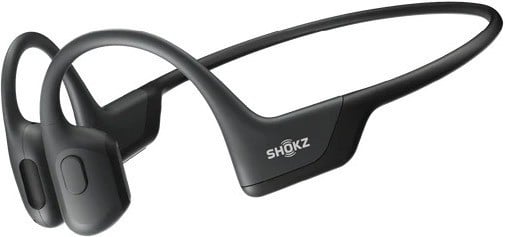
Shokz OpenRun Pro review
Bottom line: Shokz maintains its solid hold on lightweight bone conduction headphones with the OpenRun Pro as the flagship for its rebranding. What you get for that includes a comfortable fit, better sound, longer battery life, and an app to customize a few things.

Ted Kritsonis loves taking photos when the opportunity arises, be it on a camera or smartphone. Beyond sports and world history, you can find him tinkering with gadgets or enjoying a cigar. Often times, that will be with a pair of headphones or earbuds playing tunes. When he's not testing something, he's working on the next episode of his podcast, Tednologic.
